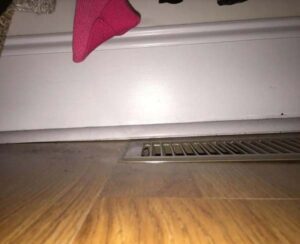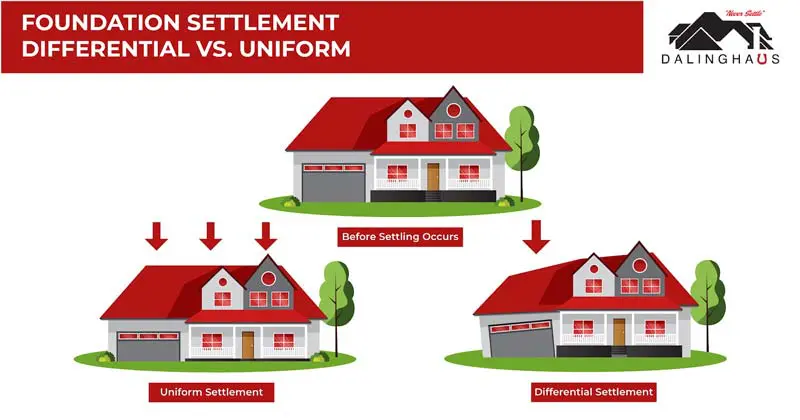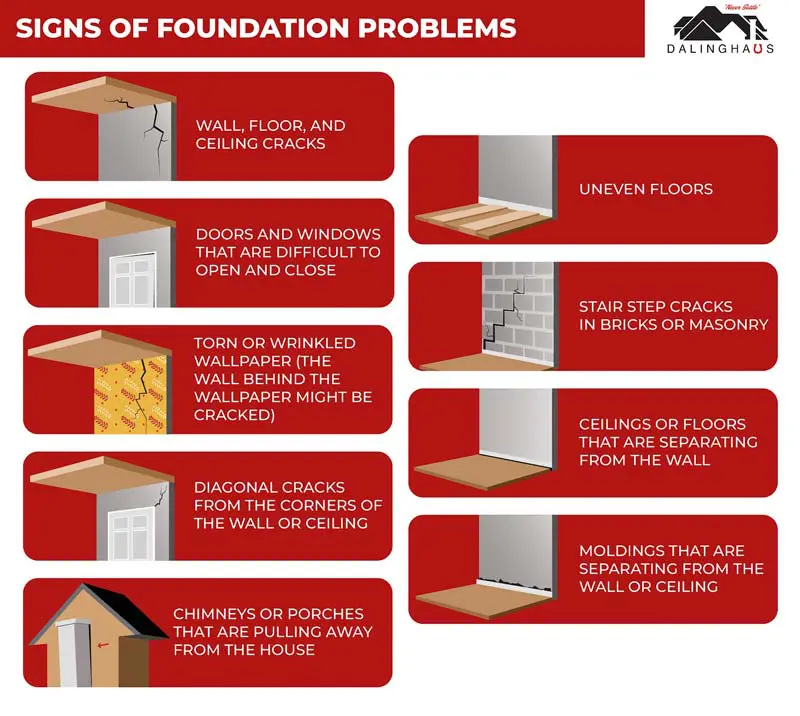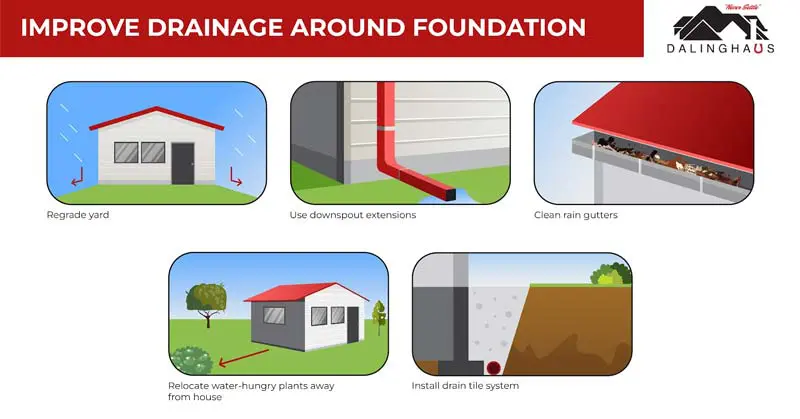
Are you looking for information about sagging floor repair cost? If so, don’t hit that back button because you’ve landed on the right page.
Sagging floors are a common homeowner problem and can be caused by various things, including foundation settlement or poor drainage. This blog post will discuss the causes of a sagging floor, how sagging floors are repaired, sagging floor repair cost, and more.
By understanding all aspects of the sagging floor repair process – from diagnosing causes to various repair options – you can stay on top of any potential situation before it evolves into costly repairs.
What Causes A Sagging Floor?
There are a few main reasons why a floor may start to sag or dip in certain areas. These include the following:
- Differential foundation settlement – This is when only part of the foundation is settling into the soil. Differential settlement places tremendous stress on a foundation and can lead to serious structural damage. We’ll talk more about differential settlement in just a bit.
- Settled support posts – If you have a crawl space foundation, sagging floors are often caused by support posts that have settled into the ground and are no longer vertical. One reason support posts settle is poor drainage around the foundation, which creates soggy soil in the crawl space.
- Termite infestation or wood rot – This is another potential cause of sagging floors in crawl space foundations.
Whatever the cause of the sagging floor, it’s essential to address the issue promptly to prevent further damage.
What Is Differential Settlement?
Differential settlement is a term used to describe a situation where the foundation of a building is settling into the ground unevenly.

Differential settlement can cause severe structural issues. Common signs of differential settlement include the following:
- Doors and windows that don’t open and close properly
- Stair step cracks in brick or masonry
- Wall, floor, and ceiling cracks
- Porches and chimneys that are pulling away from the house
- Torn wallpaper (The wall behind the wallpaper might be cracked.)
- Uneven floors
- Moldings that have separated from the wall or ceiling
- Floors and ceilings that have separated from the wall
- Diagonal cracks from the corners of doors and windows

Whatever the cause of the sagging floor, with the help of an experienced foundation repair contractor, the problem can be quickly and effectively addressed. Don’t let a sagging floor undermine the safety and stability of your home – reach out to a foundation repair professional today and get your house back on solid footing.
For more information, see What is Foundation Settlement?
How Are Sagging Floors Repaired?
The chosen repair option for a sagging floor will depend on what caused the floor to sag. A floor sagging due to differential settlement will not be repaired in the same manner as a floor sagging because of settled crawl space support posts. Once the cause has been identified, repairs can begin.
In the case of crawl space foundations, this may involve installing additional support beams or support posts. In some cases, the flooring material may need to be removed entirely and replaced
If the sagging floor is caused by differential settlement, underpinning using push or helical piers may be necessary. See Underpinning A House: The Ultimate Foundation Settlement Solution for more information.
A properly repaired sagging floor will improve the look and feel of your home, prevent further damage to your foundation and ensure its structural integrity.
How Much Does It Cost To Fix A Sagging Floor?
Fixing a sagging floor usually involves supporting the foundation via underpinning with push or helical piers or strengthening the wooden structures in the crawl space. Depending on the cause and severity of the sagging and your geographical location, the cost of repairs can vary by quite a bit. Unless we inspect your sagging floor, we can’t tell you how much it will cost to fix it. Consult a licensed foundation repair contractor to assess the damage and provide a detailed repair estimate. While fixing a sagging floor can come with a hefty price tag, addressing the issue promptly is essential to avoid further damage and potential safety risks.
Signs Your Floor Is Sagging
There are several telltale signs that your floor may be sagging. These include the following:
- Your floor is visibly uneven or sloped.
- Your floor feels bouncy when you walk on it.
- There are visible gaps between the floorboards or between the floor and the baseboard.
- Furniture shakes when you walk by.
Any of these is a sign your home’s floor could be sagging. Don’t let a sagging floor go unrepaired – take action and seek professional help as soon as you notice a problem. Addressing these issues early on is crucial to prevent further damage and ensure the comfort and well-being of your family.
How To Prevent Foundation Problems
Since most foundation issues are caused by excess moisture in the ground around the foundation, you can help prevent trouble by making sure you have groundwater under control. Here are some of the best ways to do that:
- If necessary, regrade the yard around your home so that it slopes away from the foundation. This will help prevent groundwater from draining toward the foundation.
- Use downspout extensions to channel runoff at least 4 feet from your foundation before being released.
- Consider relocating any water-hungry flowers or shrubs planted next to the foundation.
- Clean your gutters regularly so they aren’t full of leaves and other debris. You don’t want water spilling over the side of the house and soaking the ground around the foundation.
- Install a drain tile system, a gold standard when it comes to foundation waterproofing.

If you think your home needs sagging floor repair, contact us today to schedule a free foundation evaluation. If we find a problem, we’ll also provide you with a repair estimate. We serve Southern California, Arizona, and Nevada.






